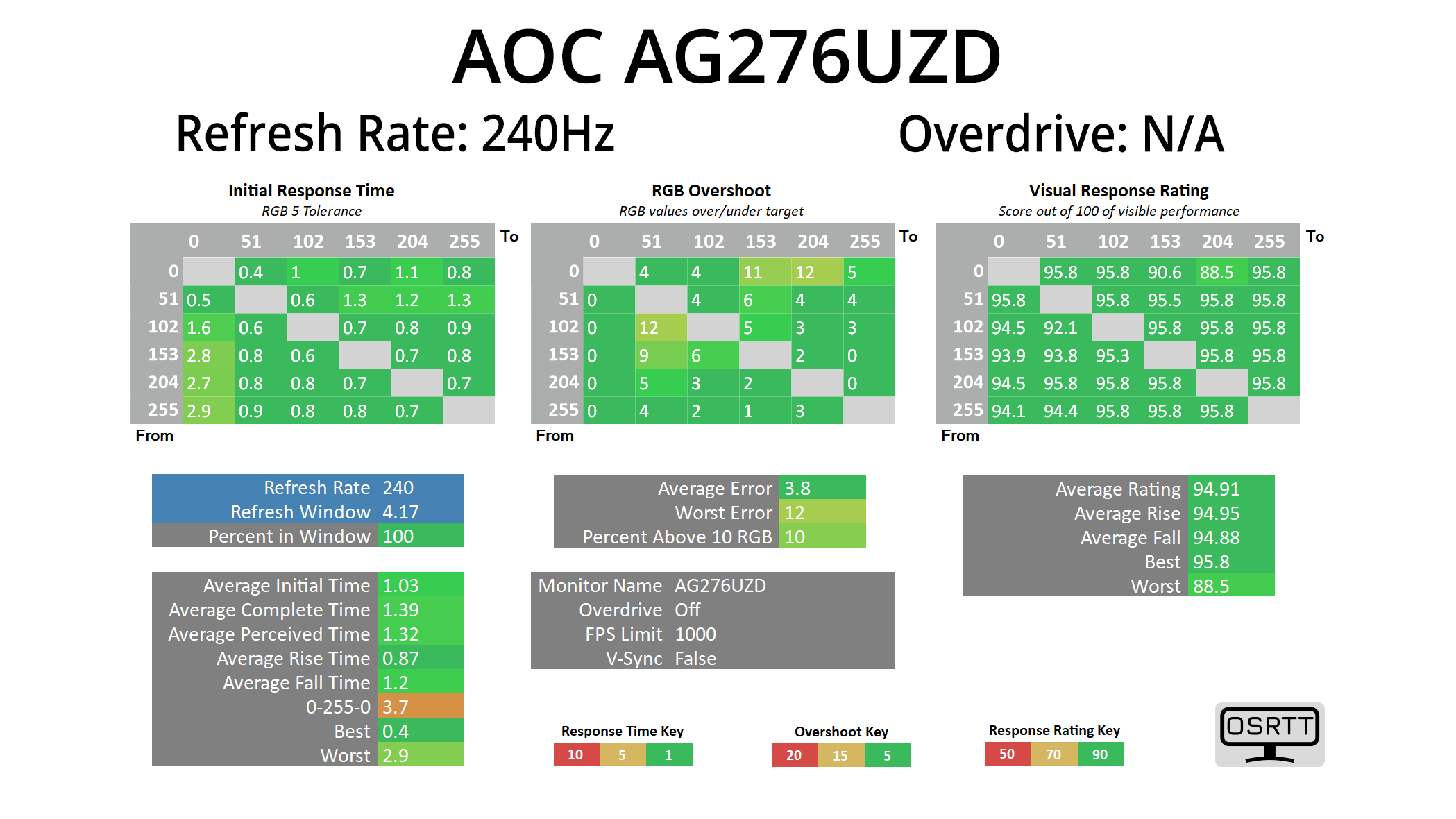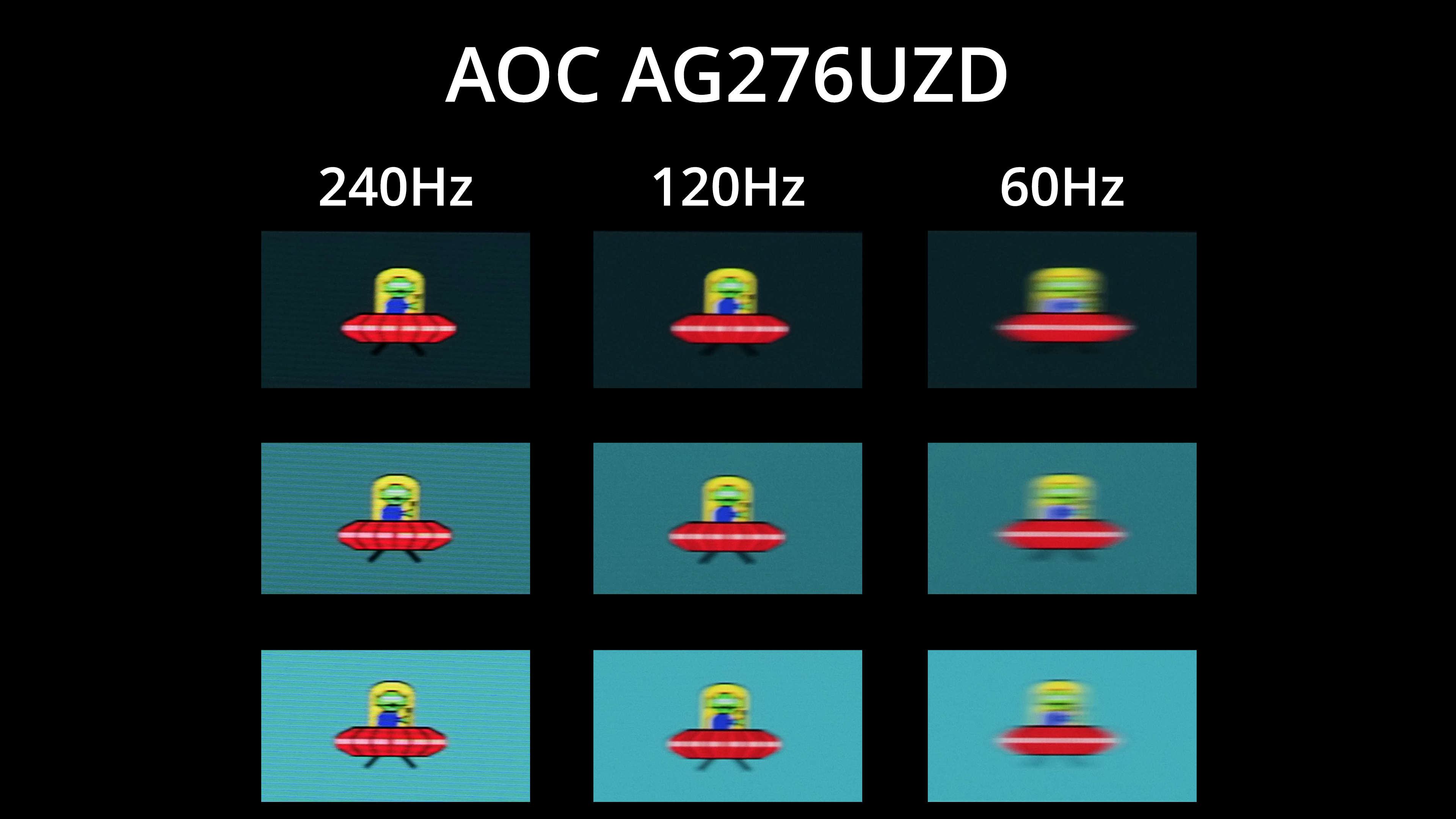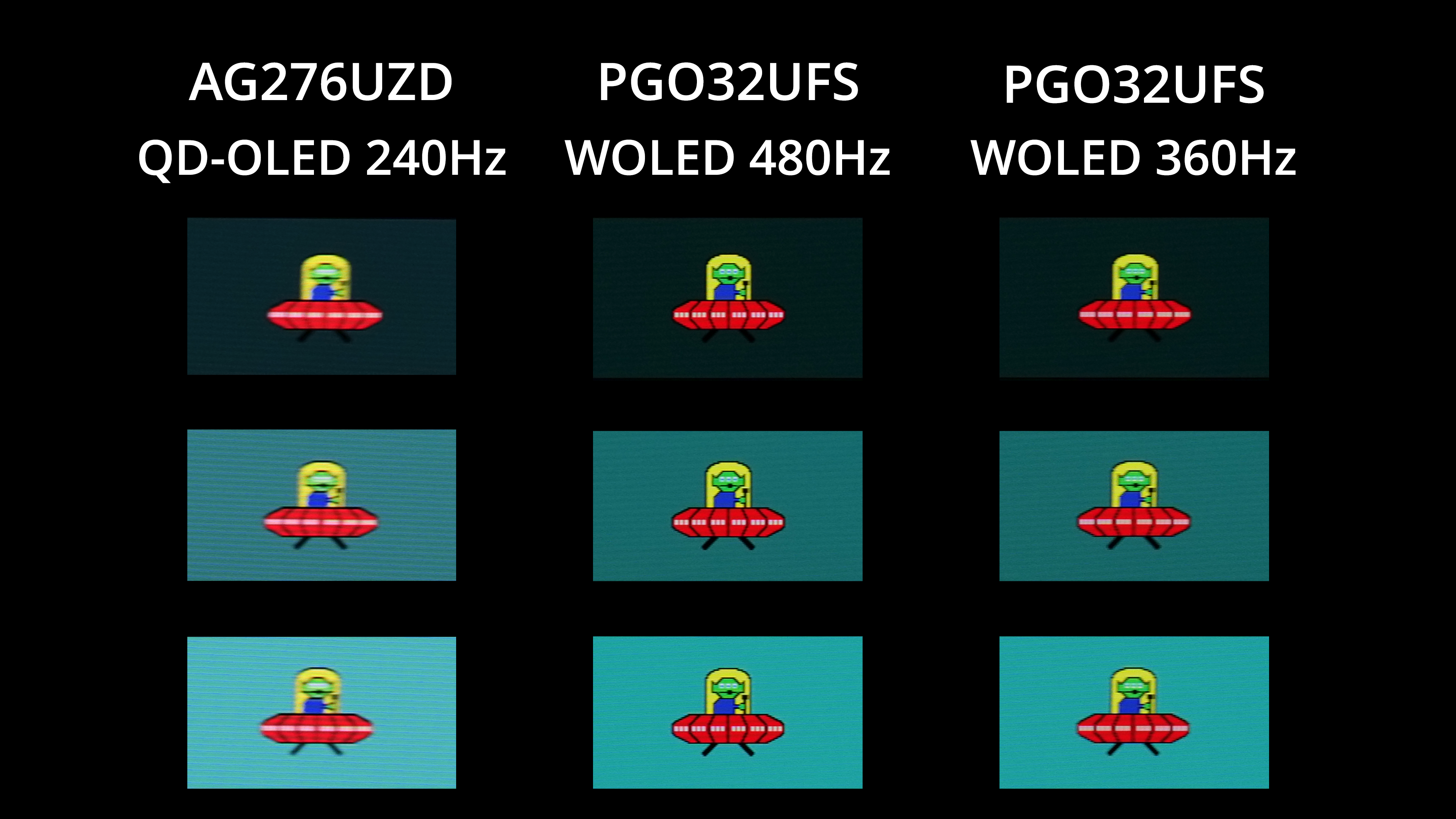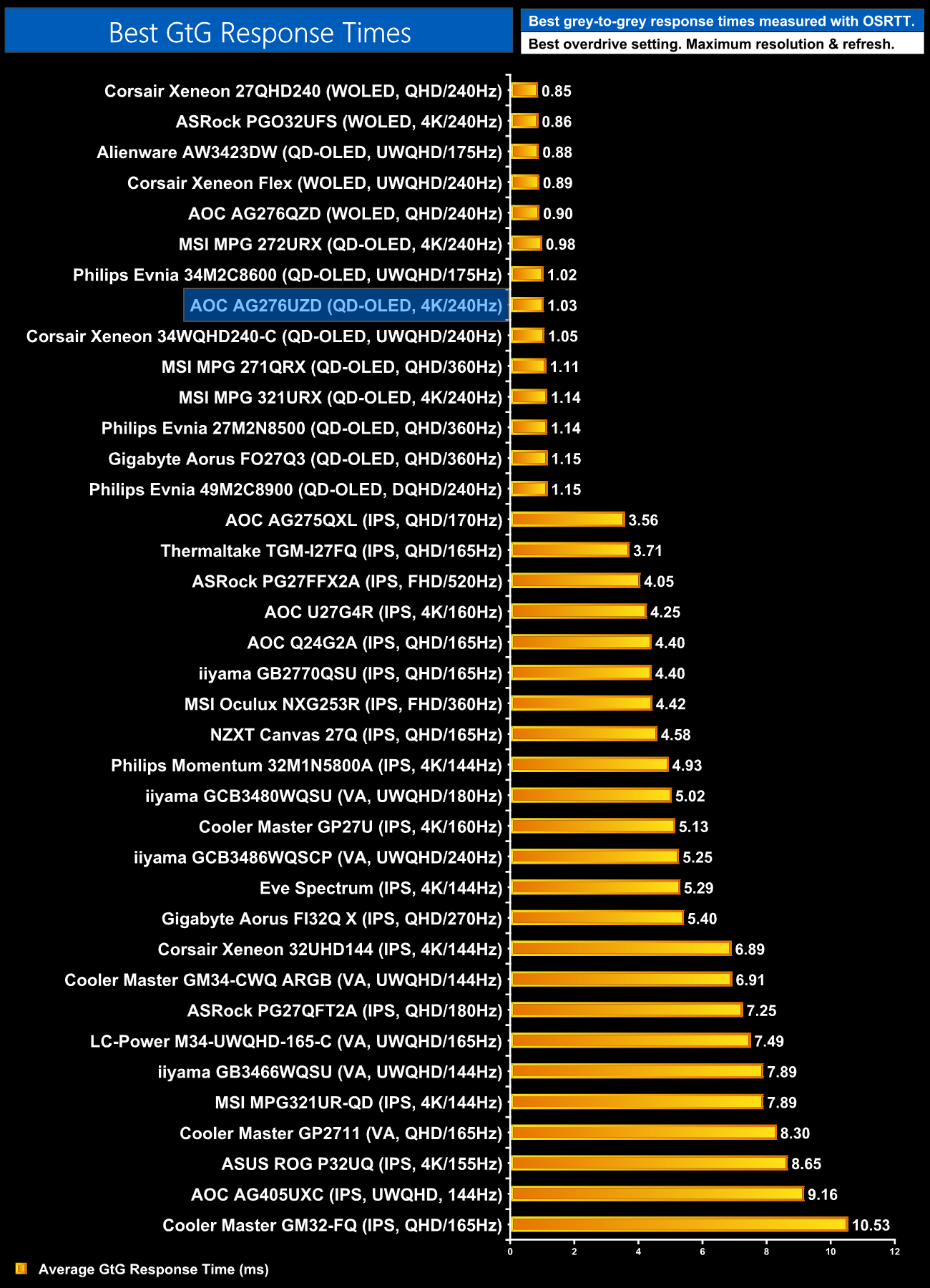We use the Open Source Response Time Tool (OSRTT), developed by TechTeamGB, for our response time testing. This measures grey-to-grey response times and presents the results in a series of heatmaps, the style of which you may be familiar with from other reviews.
Initial Response Time is the time taken for the panel to transition from one colour to another, where lower values are better. We present the initial response time, so overshoot is not taken into account and is measured separately. We use a fixed RGB 5 tolerance for each transition.
Overshoot is the term given for when a monitor's transition exceeds or goes beyond its target value. So if a monitor was meant to transition from RGB 0 to RGB 55, but it hits RGB 60 before settling back down at RGB 55, that is overshoot. This is presented as RGB values in the heatmaps – i.e. how many RGB values past the intended target were measured.
Visual Response Rating is a metric designed to ‘score' a panel's visual performance, incorporating both response times and overdrive. Fast response times with little to no overshoot will score well, while slow response times or those with significant overshoot will score poorly.
In terms of response times, we only tested at 240Hz given we know that all OLED monitors are absolute rapid in this area, and that holds true regardless of the refresh rate used.
Of course, that doesn't mean motion clarity will be the same regardless of the refresh rate – the higher you can push the refresh, the smoother things look. The jump from 120Hz to 240Hz, for instance, is quite noticeable, but you can also note there is zero ghosting at any given refresh rate target.
We know some OLED monitors are now pushing beyond 240Hz and can even hit 480Hz, like the ASRock PGO32UFS we reviewed recently. As good as the 240Hz OLED experience is, 480Hz looks a good bit clearer, while even 360Hz is a small but perceptible improvement. The thing to remember is that you actually have to drive frame rates that high to get the benefit, and trying to push 240fps at 4K resolution is no easy task to put it mildly, but this does go to show what can be achieved at higher refresh rates.
For final confirmation of the response time performance, we can see all the OLED monitors I've tested are grouped together at the top of the chart, with the AG276UZD sitting in the middle.
 KitGuru KitGuru.net – Tech News | Hardware News | Hardware Reviews | IOS | Mobile | Gaming | Graphics Cards
KitGuru KitGuru.net – Tech News | Hardware News | Hardware Reviews | IOS | Mobile | Gaming | Graphics Cards






